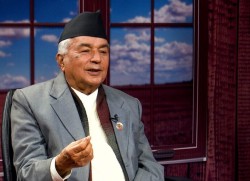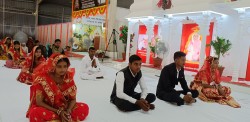Nepal
A study report on 'online violence against women journalists' shows that 88.6 per cent women journalists experience violence in their life. The study was conducted from May to August 31, 2022.
The study conducted from May-August 2022 showed that 281 women journalists working in print, electronic and online media have faced violence.
Out of 281 participants, 116 women journalists said they faced online violence from their colleagues, 89 from those out of the office, 89 from known persons, 63 from news sources/persons, 56 from those affiliated with political parties, and 26 from government officers.
The study report was unveiled by the Media Advocacy Group in Kathmandu on Wednesday.
Of them, 53 per cent said the online violence they experienced was related to the journalism profession while 21.4 per cent said the violence started online had reached to threat and physical attack.
Similarly, 11.4 per cent of the participants said they did not face online violence but heard from others, reads the study report.
The study report mentioned that the highest number of violence took place through Facebook Messenger. Of the participants, 62.3 per cent experienced violence through Facebook Messenger, 15.5 per cent through Twitter, 12.8 per cent through WhatsApp, 11.7 per cent through Viber, six per cent through email, and 4.6 per cent through Instagram.
This data shows an increase in the incidents of violence through digital medium.
Unveiling the report, the Secretary at the Ministry of Communications and Information Technology Baikuntha Aryal said that the report had raised a serious issues and the Ministry would seriously address these issues while formulating law.
"We had read the stories of violence reported in media, but the violence meted out to media persons themselves was not read," he said, worrying about the condition of common people.
Secretary Aryal also vowed that Ministry would extend support in a bid to address such problem.
Of the women journalists who faced online violence, 40.2 per cent said their profession was affected and family life of 31 per cent out of 40.2 per cent was affected due to violence, reads the study report. Likewise, 62.3 per cent suffered from mental health problems.
On the occasion, Chairperson of the Federation of Nepali Journalists Bipul Pokharel said the umbrella organisation of journalists would incorporate the findings and recommendations of the study while framing policy, rule or directive. He further said the issue of violence was not merely of women but of all walks of life.
“What would be the magnitude of violence in society when the persons with the role of making other informed falls in the circle of violence,” questioned Bandana Rana, member of Committee on the Elimination of Discrimination against Women (CEDAW). She also highlighted the need of carrying out a study on the intensity of violence meted out against male journalists as well.
Presenting the report, MAG founding Chair Babita Basnet stressed the urgency of placing adequate legal arrangement to avert gender-based violence and improving human behaviour.
MAG Chair Anita Bindu shared that the study was undertaken to draw attention of the State to legally address rising digital threats against women.
Women have been subjected to physical, mental, psychological, economic, social, cultural, sexual and tradition-induced violence in Nepal. The magnitude of violence against women has increased with the rise in the use of information technology.
In the fiscal year 2077/78, as many as 3,906 complaints related to cybercrime were registered at the Nepal Police Cyber Bureau. Among them, 2,003 complaints were related to misbehaviour against women, 1,471 related to violence against men and 224 of other gender category. - RSS






